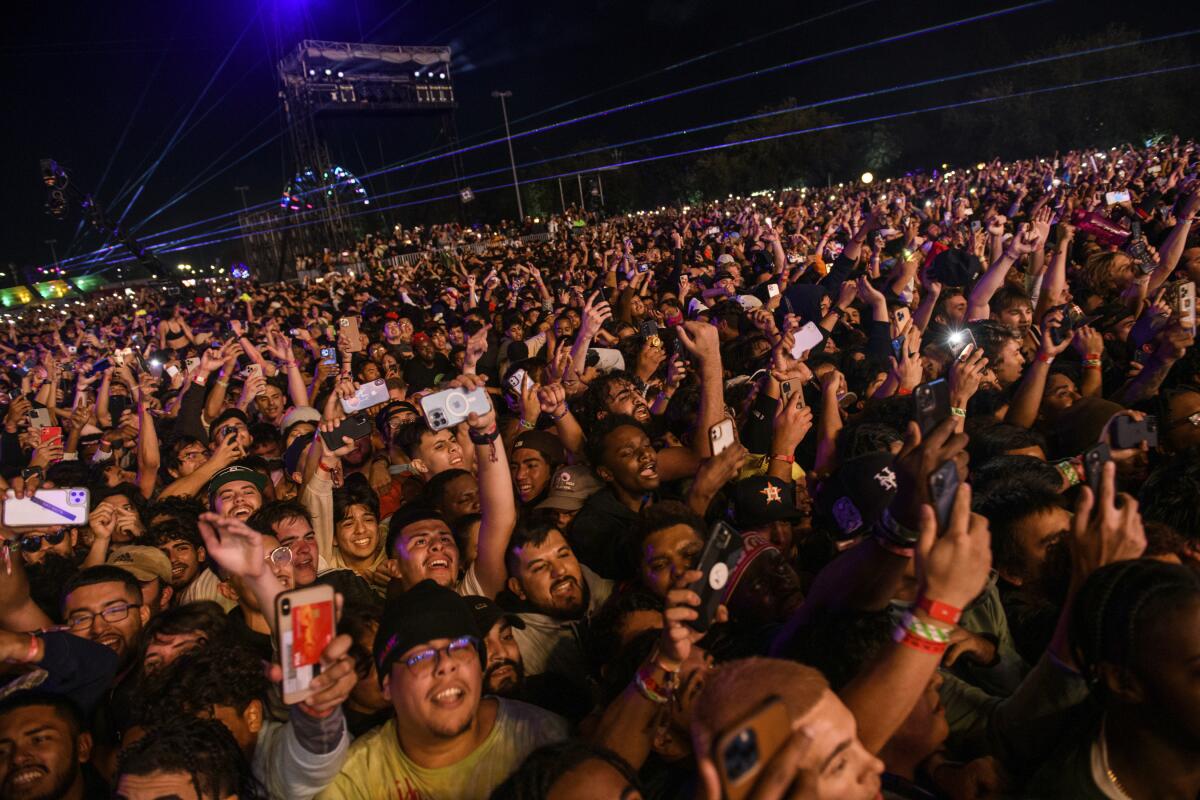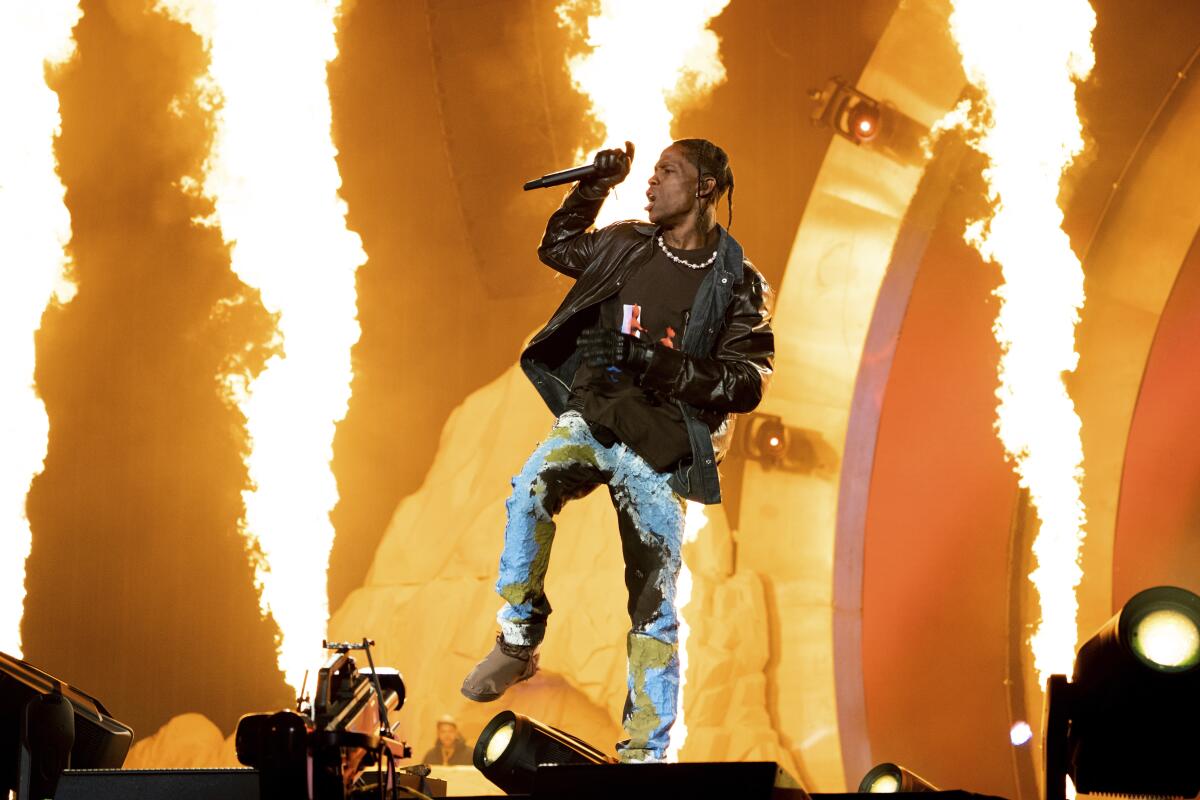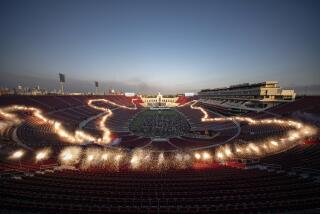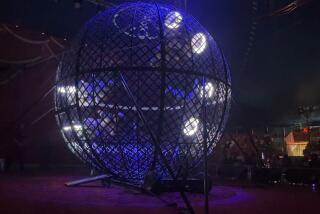Concert safety expert: Deaths at Travis Scott’s Astroworld Festival were ‘preventable’

When concert safety consultant Paul Wertheimer first saw video from Travis Scott’s Astroworld Festival in Houston, where at least eight people died Friday during a crowd surge in Scott’s set, his conclusion was based on decades of experience.
“This was preventable. The crowd was allowed to get too dense and was not managed properly,” he said. “The fans were the victims of an environment in which they could not control.”
Eight people died and 25 were hospitalized after crowds surged at the Travis Scott’s Astroworld Festival in Houston on Friday.
Wertheimer has been leading the charge for concert safety since 1979, when he was an on-site investigator the night 11 people were trampled to death at a Cincinnati concert by the Who. He compiled the post-concert report on the failings, including festival seating, that led to the deaths, and across the next four decades has advocated for crowd safety measures through his company Crowd Management Strategies.
In 2000 at the Roskilde Festival in Denmark, when nine people were trampled to death at a Pearl Jam concert, Wertheimer consulted with the Danish government on preventive solutions. He’s testified in civil suits against concert promoters and security companies. As the decades have passed, Wertheimer has come to an unfortunate conclusion.
“Life is cheap. Young people are still exposed to the extreme dangers,” he said. The main reason being that “the people who organize and approve these events are not held criminally liable for gross negligence. And as long as promoters, artists, security, venue, operators and city officials who approved these plans are not held criminally liable — this is going to drone on.”
The Who, Pearl Jam and Travis Scott tragedies all share a similar trait: so-called festival seating. A first-come, first-serve approach to ticketing, it replaces reserved seats, or any seats at all, in favor of a shoulder-to-shoulder, general admission experience. Those who have been to a festival in the last three decades, be it Coachella, Stagecoach, Bonnaroo or Woodstock ’99, have partaken in festival seating. Legendary ’60s concerts Woodstock and Altamont utilized festival seating, but even in the early 1970s its use was rare enough as to warrant a mention in reviews.
Festival seating offers fans willing to line up early the opportunity for closer views, and the space in which to dance or, at a Travis Scott concert, to mosh. For promoters such as Astroworld’s Live Nation, festival seating means more tickets sold. Wertheimer said that a seat might take up 6 square feet of space; a packed event such as Astroworld might only allow for 2 square feet of room per person.
Crowd-control measures have improved since 1979. Goldenvoice’s Coachella, held at the Empire Polo Club in Indio, separates its main stage pitch into grids divided by heavy iron barriers, and the resulting canals prevent large-scale mosh pits or heaving crowds from getting out of control. The approach also allows for security to access trouble spots more easily.
Wertheimer said that barriers, which he describes as “like a reef that you put in the ocean to break up the waves,” can be effective, but not always. The Roskilde Festival used barriers to break up the crowd, he explains. “If you overcrowd a place, people can get crushed in between. It’s not necessarily going to work if you’re not taking other precautions.”
He added: “Travis Scott was known to have chaotic concerts, so it likely wouldn’t work with him. If it’s Pink Floyd, it’s going to work.”

Most often, the promoter is responsible for following crowd safety guidelines, Wertheimer said, noting that at particularly high-energy shows such as Scott’s, security guards usually maintain some sort of presence, not just on the perimeters but in the crowd itself. But Wertheimer said that some major security firms instruct their personnel to avoid dangerous situations. “Their manuals say ‘Don’t get involved. You could get injured and then we’ve got workman’s comp. Or contact your supervisor.’ So people are dying and you’re trying to reach your supervisor.”
One Astroworld attendee specifically noted the lack of security personnel. “I’ve been to Lollapalooza in Chicago, it was nothing like that. There should be a lot of security there, just to be safe,” Julian Ponce, 21, told The Times. A video from earlier in the day documented a rush of fans breaking through the VIP gates, only to be thwarted by officers on horseback.
Houston Police Chief Troy Finner acknowledged the earlier breach during a Saturday news conference: “It was something we got under control,” he said.
“There are a lot of questions that still need to be answered,” Houston Mayor Sylvester Turner said, stating that 528 police officers were assigned to the concert, “plus 755 security guards provided by Live Nation.”
Lina Hidalgo, chief executive for Harris County surrounding Houston, noted that the festival stepped up its security over the last Astroworld event by more than 150 personnel, after a barricade breach in 2019.
“It doesn’t matter how many police officers and security were there if they’re not in the proper location and they’re not trained in crowd management,” Wertheimer said of those numbers. “None of those people were in the crowd. Not enough of them were near the front barriers.” He added that most often, police officers aren’t assigned to crowd management anyway.
Concert promoter Live Nation issued a statement that read: “Heartbroken for those lost and impacted at Astroworld last night. We will continue working to provide as much information and assistance as possible to the local authorities as they investigate the situation.”
Houston Fire Chief Samuel Peña said the concert was inspected in advance, including access to entrances and exits. “What we’re looking into is what led to the crowd surge,” Peña said. “It was the crowd control at the stage that was the issue.”
Wertheimer said he takes specific issue with something that Peña said during the news conference on Saturday morning, that “the crowd began to compress towards the front of the stage, and that caused some panic, and it started causing some injuries.”
That’s framed entirely wrong, Wertheimer said. “When the fire chief of Houston says people were panicking, it tells me right off the bat he’s never been in a crowd crush. People were not panicking. They were trying to save their lives and save the lives of people around them.”
“There was like no airflow in there. It was just like primal instinct: I had to get out,” Astroworld attendee Gerardo Abad Garcia, 25, told The Times.
Whoever is to blame, lawsuits will probably follow. In the wake of the deadly Who concert, victims’ families sued not only the band, but the venue, its directors, the city of Cincinnati and the concert promotion company.
“Sixteen-year-old Suzy, or 18-year-old Johnny, are not crowd managers, fire marshals or security guards,” Wertheimer concluded. “They have a right to assume somebody is looking after their safety, but as is the case at concerts and festivals, all too often there is no safety net for them — and they’re the last ones to find that out.”
More to Read
The biggest entertainment stories
Get our big stories about Hollywood, film, television, music, arts, culture and more right in your inbox as soon as they publish.
You may occasionally receive promotional content from the Los Angeles Times.












